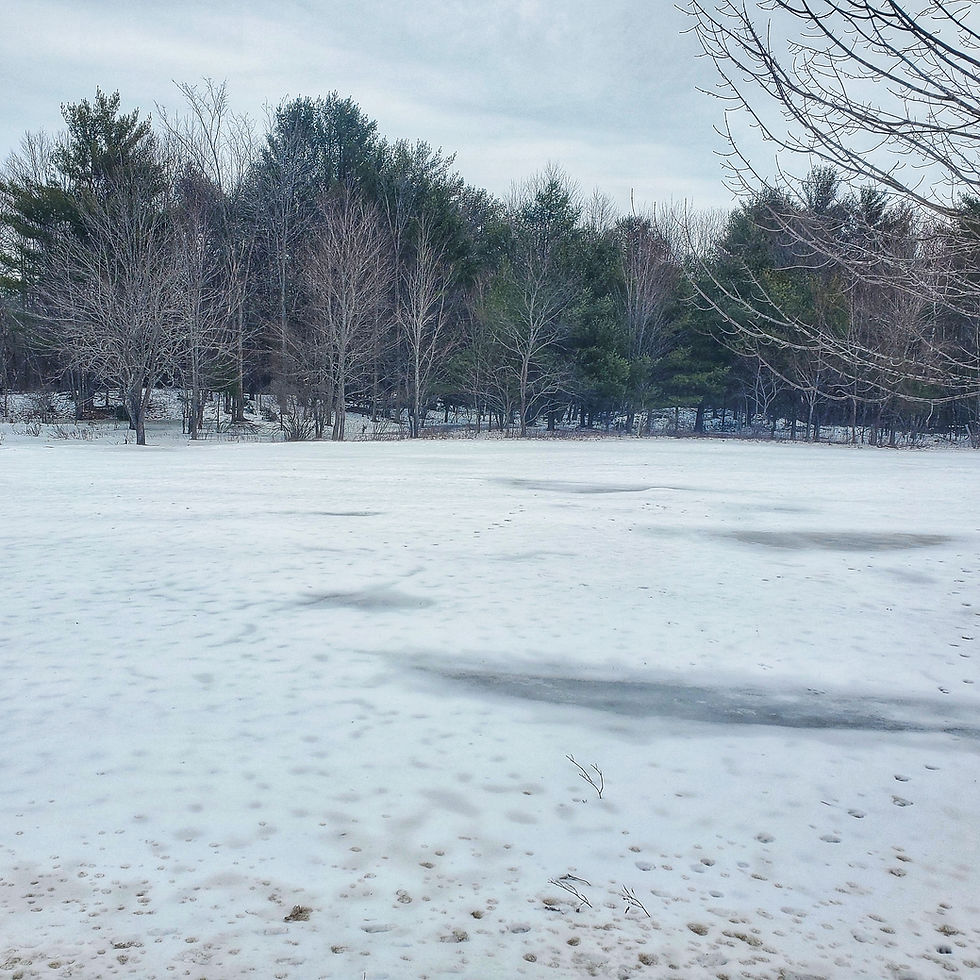It's Elemental, Part 3: The Transformative Power of Earth
- Lisa Cox
- Feb 8, 2023
- 3 min read
One day last month I walked from my dad's to my mom's apartment. It's about 2 1/2 miles, and I go along back roads as much as possible. It's very possible in small town Maine.
I am a Soil Scientist, with a Masters degree in the discipline and a certificate in Reclamation and Restoration Ecology. I worked for an environmental consulting firm doing soils mapping for shy of a couple years. (I love the soil orders, can talk to you especially about Alfisols, my favorite, and was engrossed in the mapping aspect at the time.) Since, I have moved on to simply appreciating soils as the Fabric of the Earth as I go about daily life. And on the day I walked to my mom's apartment, the Earth element was the focus of my Medicine Walk.
Throughout my stay in Maine last month, daily I would marvel at the amount of sand everywhere. It is Winter, and sanding and salting are regular activities when it snows or rains or sleets, all of which happened regularly during January. But Maine is a sandy state- at least in the Oxford Hills where I grew up. Rather than use this post to explain how soils formed in Maine, I'll point you to this FAQ sheet on Maine's surficial geology for a nice teaser. Now we can move on to the Medicine Walk.
As I set out along Beal Street and then turned onto Cottage, I felt the humidity in the air, and smelled the Earth element mingling with water as the ground melted slowly over the course of the day. Past a pond I walked and then up the hill, breathing in the scent of dead leaves, twigs and blades of grass incorporating into the ground with the aid of snowmelt, and damp mosses and lichens covering granite outcrops. At the top of the hill, past my cousin's and then my aunt's houses, I turned again, on flatter ground, and admired an expanse of field between the road and the forest. Undoubtedly tucked under the snow were vestiges of glacial activity in the form of rocks, most likely as stonewall.
Northern New England is a stonewall mecca. We had them surrounding our property when I was growing up, evidence of clearing the fields for planting, play houses for us kids, and homes for insects, small mammals, and occasionally snakes. "Good fences make good neighbors," a proverb made famous in Robert Frost's poem Mending Wall, takes on a whole new meaning in this context, and demonstrates a Transformative Power of Earth. We were neighbors and friends of the creatures in the stonewalls.
"Solid as a rock," "well grounded," and the list goes on. The Earth element grounds us, keeps us rooted- as long as we connect with it. Consider taking a Medicine Walk to connect with Earth, from the grain of sand stuck in your shoe to the highest mountain that takes your breath away- and everything in between.
I continued my walk through the woods, admiring the way tree roots and moss hugged rocks that slowly transformed in a stream as water coursed over them, and back down the hill and across the main road to my mom's apartment, where I picked up the car. The rest of my trip, behind the wheel to the hospital to visit my dad, took place through town, on pavement. My feet felt like they were stretching through the floorboards into the ground beneath the street, wanting to continue to connect with the Earth as it transformed my day from mundane to magical.

"Forget not that the Earth delights to feel your bare feet and the wind longs to play with your hair." - Kahlil Gibran









Comments